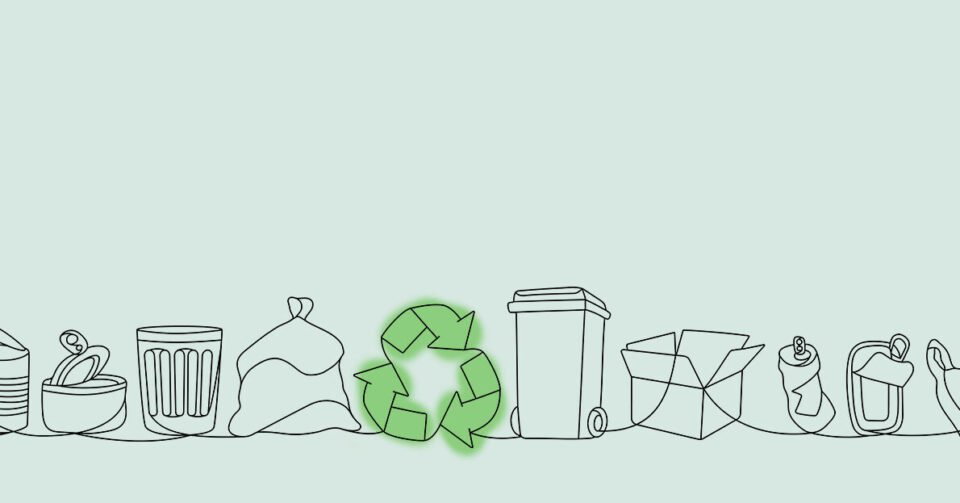Reduce, Reuse, and Reinvigorate the FTC’s Green Guides
Connor Fraser (Napoli Student Fellow in Environmental Law & Policy, Guarini Center) / March 23, 2023

This piece is part of our Student Blog Series, featuring posts on climate, clean energy, and environmental issues from the State Impact Center’s legal interns and other students working with the Center.
When your favorite soft drink comes in a plastic bottle labeled “recyclable,” you may not think twice about tossing it in a blue recycling bin. You’ve done your job, and now the bottle will be processed into a new plastic product. But that bottle might not ever be recycled. Behind that “recyclable” label is a complex set of guidelines—the Federal Trade Commission’s (FTC’s) Guides for the Use of Environmental Marketing Claims—that should, but often don’t, guide companies on when and how they can tell you a plastic bottle is recyclable. There’s more to the “recyclable” label than meets the consumer’s eye.
The FTC’s guidance, also known as the “Green Guides,” covers many common environmental labels on consumer products, from “recyclable” and “non-toxic” to “compostable.” The Guides explain the FTC’s views about what environmental marketing claims constitute unfair or deceptive advertising under Section 5 of the Federal Trade Commission Act. While the Guides do not bind the FTC, they provide standards and examples that capture the FTC’s view of what marketing claims are likely to deceive “reasonable” consumers under federal law.
The Guides are also an important reference point at the state level. Consumer protection statutes or regulations in 36 states and territories incorporate the FTC’s Green Guides in some way. The Guides function as a legal standard for determining state law liability or as a persuasive rubric for evaluating unfair and deceptive acts or practices across the country. They therefore play an important role in guiding marketers and consumers about federal and state law on product labels.
The FTC is currently seeking public comments on the Green Guides after not updating them for over a decade. The FTC’s review of the Guides comes at a crucial time, because research and litigation have revealed ambiguities in the Guides’ definitions of common environmental labels—particularly the definition of “recyclable” products. These ambiguities undermine the Guides’ informational purpose, and the FTC has an opportunity to clarify its guidance during this next update.
Applying the Guides’ definition of “recyclable” to plastic products illustrates three major ambiguities in the FTC’s guidance. First, the Guides do not directly account for the fact that many plastic products labeled “recyclable” are not actually recycled to make new plastic products because of serious constraints on the domestic recycling market. Greenpeace documented this trend for common consumer plastic products in a 2020 report, for example. Second, the Guides do not clearly state when marketers must qualify “recyclable” labels with additional information about consumer access to recycling facilities. Without any guidance on how to evaluate the relevant market for a recyclable product (which could be the local, state, or national recycling market), marketers have broad discretion and consumers may receive deceptive information.
Third, the Guides permit recyclability claims even when “minor incidental components” on the product are not recyclable, but they do not generally define that term. Instead, the Guides provide one example that a bottle cap made from unrecyclable materials would count as a “minor, incidental component” of an otherwise recyclable plastic soft drink bottle. However, a general definition of “minor incidental components” would be important for two reasons: (1) if a minor incidental component significantly limits the recyclability of a product, but the product does not disclose that information, then the product’s labeling is deceptive under the Guides, and (2) as a result, consumers would not know to remove the minor incidental component from the product before recycling it, limiting the likelihood that the product is actually recycling into a new plastic product.
These gray areas in the Guides’ definition of “recyclable” make it difficult for consumers to rely on recyclability claims on products and for companies to understand when and how to make truthful and clear representations. The FTC’s updates can help to address these ambiguities. Public comments on the Green Guides are due by April 24, 2023 per the FTC’s notice.
For more information about the Green Guides, their intersections with state consumer protection laws, and the Guides’ definition of “recyclable,” check out the State Impact Center’s recent issue brief: What’s in a Label? The FTC Green Guides in Context.
This page was updated on April 2, 2024 to better meet our accessibility standards. To see the page as it was initially published, click here.
